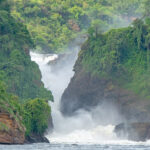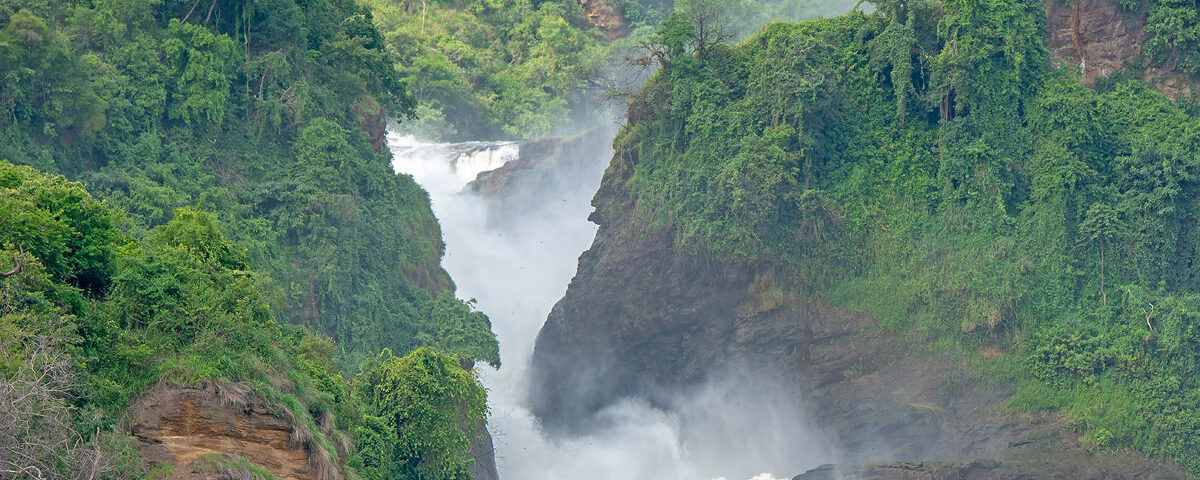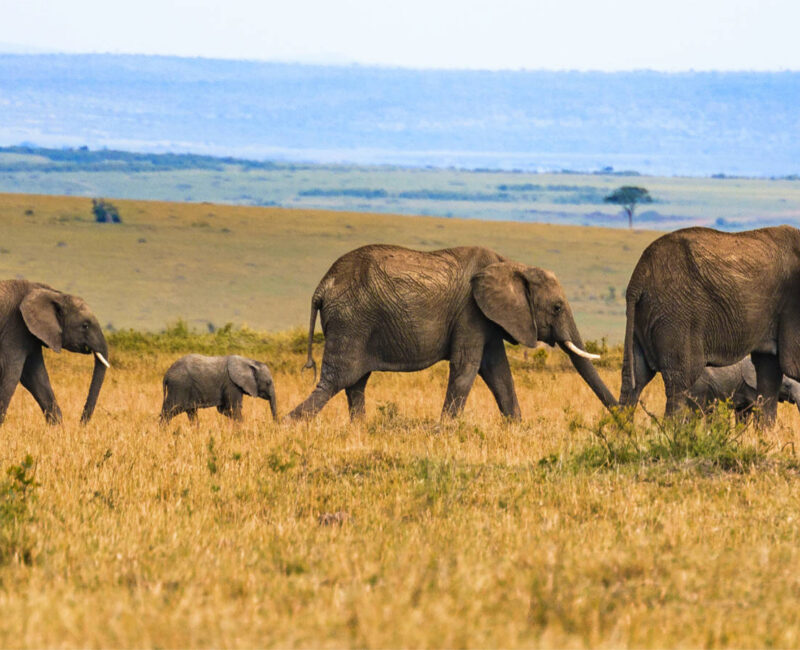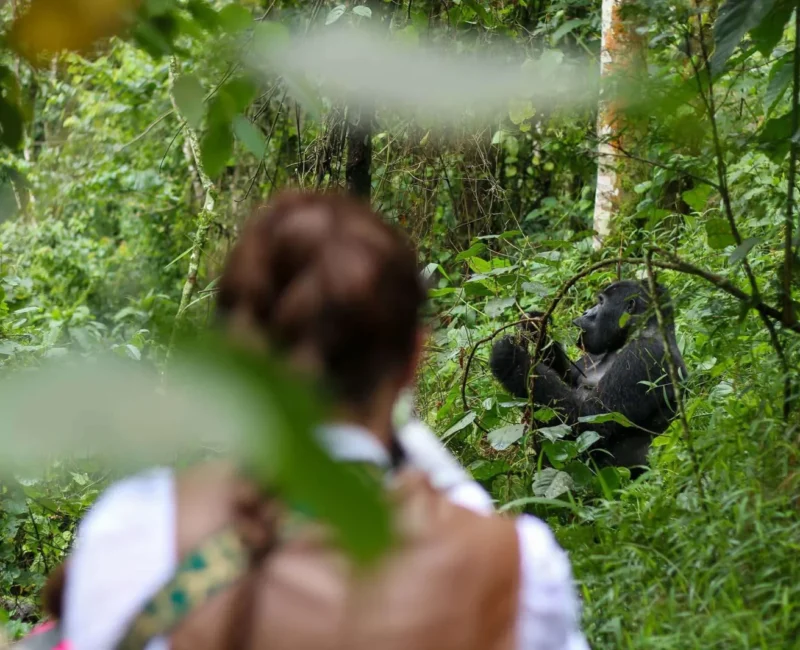
How Close Can You Get to the Falls on a Boat?
May 11, 2025
How Long Does the Boat Safari Take?
May 11, 2025How Did Murchison Falls Get Its Name?
Understanding the origin of a name often reveals much about a place’s historical and cultural significance. In the case of Murchison Falls, this is certainly true. So, How Did Murchison Falls Get Its Name? The answer takes us back to the 19th century, during the era of European exploration in Africa. The falls were named by British explorer Sir Samuel Baker in 1864 after Roderick Murchison, the then-president of the Royal Geographical Society. This act of naming was part of a broader trend among European explorers who christened African landmarks in honor of their patrons or prominent figures back home.
Today, the name Murchison Falls is not only a nod to history but a cornerstone of one of Uganda’s most visited national parks. Murchison Falls Tours offered by EcoQuest Safaris give travelers the opportunity to explore this iconic waterfall, alongside other unforgettable Uganda safari activities like wildlife safaris, Chimpanzee Tracking in Budongo Forest, and even Gorilla Trekking in Bwindi. Each of these adventures is framed by the story behind the falls’ name, making it essential to understand how Murchison Falls got its name to fully appreciate its place in Uganda’s natural and historical landscape.
The Story of Sir Samuel Baker and the Naming of the Falls
To delve deeper into the question, How Did Murchison Falls Get Its Name?, one must explore the story of Sir Samuel Baker. He was an English explorer and naturalist who, along with his wife Florence, set out to explore the upper Nile region in the mid-19th century. In 1864, while navigating the Nile River, Baker encountered the dramatic waterfalls that would eventually bear the name Murchison Falls. Struck by the power and majesty of the scene, he named the falls after Roderick Murchison, a respected geologist and the president of the Royal Geographical Society at the time. This act of naming was not merely personal—it was symbolic. It marked the geopolitical influence of European powers during the age of discovery and colonization.
Baker’s exploration laid the groundwork for future conservation efforts, which would ultimately lead to the establishment of Murchison Falls National Park in 1952. Murchison Falls Safaris now follow in the footsteps of this historic journey, offering modern explorers a chance to experience the same natural wonders. Whether on a Hike to the Top of Murchison Falls or a boat cruise below the thundering cascade, today’s visitors witness the enduring legacy of Baker’s discovery. These moments are not just scenic—they’re steeped in a fascinating historical context that continues to shape Uganda safaris today.
Historical Context and Colonial Legacy
When asking, How Did Murchison Falls Get Its Name?, one cannot ignore the colonial undertones of this historical act. The naming of geographical features by European explorers was a widespread practice during the colonial era. It was a way of asserting dominance, documenting discoveries, and securing funding for further exploration. In the case of Murchison Falls, Sir Samuel Baker’s decision to name the waterfall after Roderick Murchison aligned with the norms of the time. Roderick Murchison himself was a prominent figure in British scientific circles, and his name lent legitimacy to Baker’s exploratory endeavors. Over time, this colonial naming gave way to deeper discussions about heritage, identity, and ownership. As Uganda moved toward independence, the significance of names such as Murchison Falls evolved from colonial relics to symbols of national pride and conservation.
Today, the name Murchison Falls is synonymous with Uganda Safaris, not European conquest. Visitors from around the world now come not to claim, but to experience. They engage in Murchison Falls Tours that celebrate both natural beauty and cultural depth. Through wildlife safaris, Chimpanzee Tracking, and cultural experiences with local communities, the modern visitor helps redefine what the name Murchison Falls means in the 21st century. From its colonial past to its current status as a jewel in Uganda’s tourism crown, understanding how Murchison Falls got its name enhances every journey through this magnificent park.
Murchison Falls in Modern Uganda: A Name That Endures
As we consider How Did Murchison Falls Get Its Name? in today’s context, it’s clear that the waterfall has become more than a historical landmark—it is a living part of Uganda’s ecological and cultural identity. Despite its colonial origins, the name Murchison Falls now represents the country’s commitment to conservation and tourism development. The waterfall is the central feature of Murchison Falls National Park, a protected area that spans approximately 3,893 square kilometers. This park plays a vital role in Uganda Safaris, drawing visitors eager for wildlife safaris, boat cruises, and the famed Hike to the Top of Murchison Falls. With each tour, guests are reminded of the falls’ historical significance while also participating in its modern story.
EcoQuest Safaris curates personalized Murchison Falls Tours that blend adventure with education, connecting past and present. Cultural experiences with nearby communities, such as the Alur and Banyoro, provide additional context, allowing travelers to see how the falls influence local life today. Combined with Gorilla Trekking in Bwindi or Chimpanzee Tracking in Budongo Forest, Murchison Falls Safaris form part of a larger narrative that is both historical and forward-looking. Understanding how Murchison Falls got its name thus becomes a gateway to appreciating the full scope of Uganda’s natural and cultural treasures.




